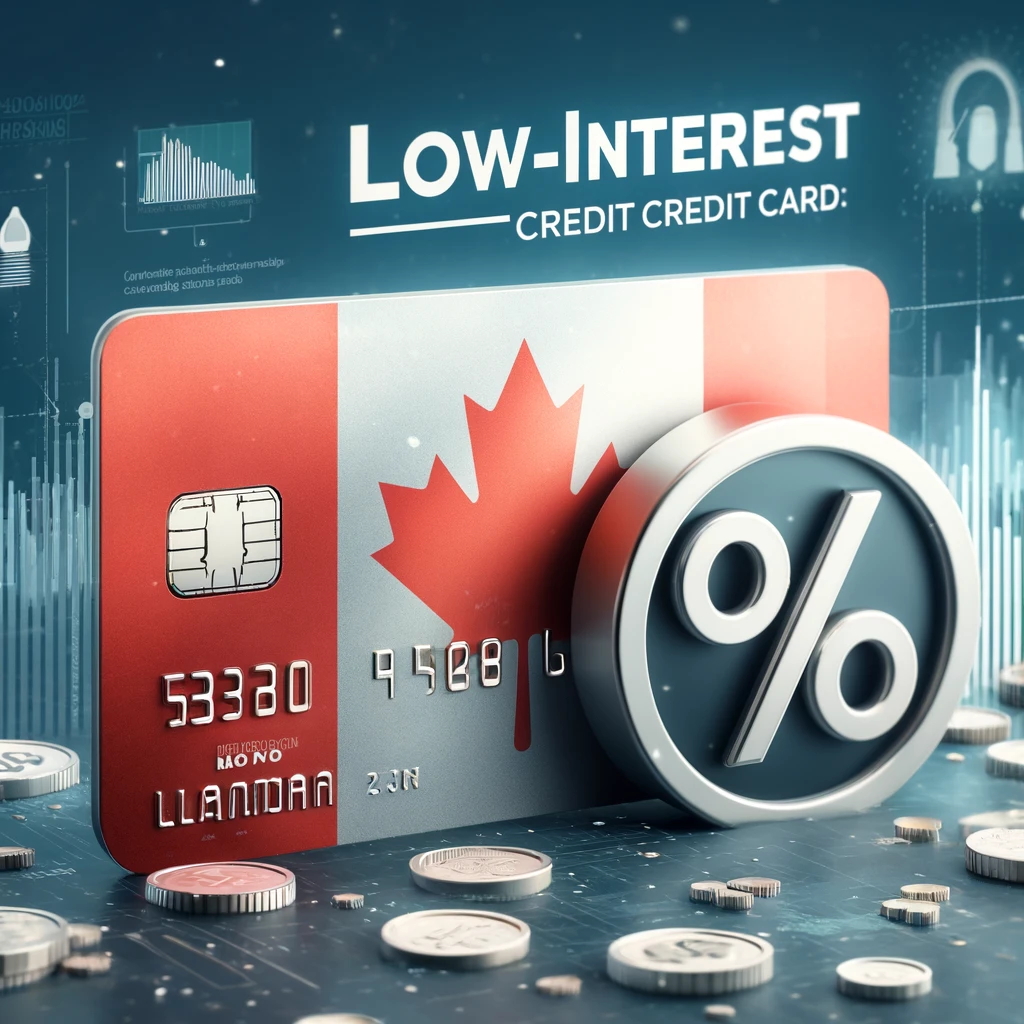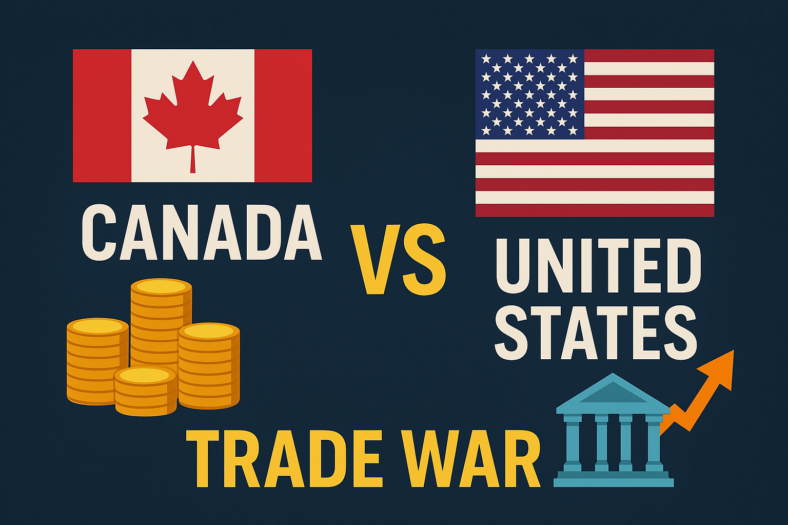Our Top Picks for the Best Low-Interest Credit Cards in Canada
| Compare | Ratestead Rating | Annual Fee | Annual Rewards | Welcome Bonus | Learn More |
|---|
| APPLY NOW | /10 |
Are you looking for a reliable and affordable way to finance your everyday purchases? Low-interest credit cards can be an excellent choice for Canadian consumers who want to stay on top of their costs without having to pay too much in interest. Let’s take a look at what low-interest credit cards have to offer!
What Is A Low-Interest Credit Card?
A low-interest credit card is a type of card that offers lower than average interest rates. This type of card is ideal for those who are trying to manage their finances by limiting the amount they pay in interest each month. For example, if you have a $1,000 balance on your card with an 18% annual interest rate, you would pay about $15 per month in interest charges. However, if you had a low-interest credit card with an 11% annual interest rate, you would only pay around $9 per month. This can add up over time and save you hundreds of dollars!
Benefits Of Low-Interest Credit Cards
Low-interest credit cards come with several benefits that make them attractive options for individuals who are trying to manage their expenses better. Here are some key advantages of using this type of card:
- Lower Interest Rates – As mentioned above, the biggest advantage of using a low-interest credit card is that it offers lower than average interest rates. This means that you can save money on the amount of interest you owe each month and get more out of your budget!
- Increased Credit Card Rewards – Many issuers offer additional rewards or discounts when you use a low-interest credit card. You may be able to get cash back or discounts on certain purchases or services simply by using this type of card instead of another one with higher rates!
- Improved Financial Wellbeing – Low-interest credit cards help improve your financial wellbeing by making it easier for you to manage your finances and reduce debt over time. By taking advantage of the lower rates offered by these cards, you can free up more money in your budget each month and start building wealth faster!
Low-interest credit cards are an excellent option for Canadians who want more control over their finances without having to worry about paying too much in interest charges every month. With lower than average rates, increased rewards programs, and improved financial wellbeing, these types of cards have plenty to offer consumers who are looking for reliable financing options that won’t break the bank! If you’re interested in learning more about how low-interest credit cards can benefit your situation, contact us today at [insert contact information] and we’ll be happy to assist you!
Why apply for Low-Interest Credit Cards in Canada?
Low-interest credit cards are a great way to manage your finances and save money. With lower interest rates than traditional credit cards, low-interest credit cards help you pay down debt faster and avoid costly fees and penalties. In this blog post, we will discuss why applying for a low-interest credit card can be beneficial for Canadians.
Lower Interest Rates
Low-interest credit cards offer significantly lower interest rates than other types of credit cards. This is because the card issuer is taking on less risk when they offer you a low-interest rate. Instead of taking on the risk of defaulting payments, they are offering you a reduced interest rate as an incentive to pay off your debt faster. Because these low-interest rates are more manageable, it makes it easier to pay down your debt without being overwhelmed by high interest charges.
Easier Money Management
With low-interest credit cards, you can easily manage your money with more confidence. You won’t have to worry about paying higher interest fees or getting stuck with a huge balance that takes years to pay off. Low-interest credit cards also make it easier to budget since the amount due each month will generally be smaller than with higher interest rate options. This allows you to plan ahead and make sure that all your bills get paid on time while still having some money left over for other expenses or savings goals.
No Annual Fees
Many low-interest credit cards also don’t have annual fees attached, which means that you can use them without any extra cost besides the monthly payments that go toward paying off the balance owed each month. This is an especially attractive feature for those who don’t travel often but want access to a line of credit in case an emergency arises or if they need to purchase something unexpectedly large such as a new car or furniture set.
Low-interest credit cards are an excellent option for anyone looking for ways to better manage their finances and save money in Canada. With lower interest rates than traditional credit cards, these cards can help Canadians pay down their debt faster while avoiding costly fees and penalties associated with higher interest rate options. Furthermore, many of these types of cards don’t come with annual fees which may further reduce their overall cost over time compared to regular credit card offerings. For anyone looking for ways to save money and make smarter financial decisions, applying for a low-interest Canadian Credit Card may be just what you need!
How to apply for Low-Interest Credit Cards in Canada?
Are you looking to save money by applying for a low-interest credit card in Canada? With so many options out there, it can be hard to know where to start. Fortunately, we’ve put together this guide to help you find the best low-interest credit card for your needs. Here’s what you need to know when applying.
Know Your Credit Score
The first step in finding the right low-interest credit card is knowing your credit score. Your credit score is a three-digit number that gives potential lenders an indication of how likely you are to repay any debts you might incur. The higher your credit score, the more likely it is that lenders will accept you for a loan or offer you a lower rate on their products. To get an accurate picture of your creditworthiness, make sure to check your credit report with both Equifax and TransUnion before applying for any credit cards.
Compare Different Offers
Once you know what kind of offers are available based on your score, it’s time to compare different cards and offers. When evaluating these offers, look at the annual percentage rate (APR), which is the interest rate charged on any outstanding balance; fees associated with maintaining the account; rewards programs; and benefits such as travel insurance or cash back rewards. Also keep in mind whether the card has an annual fee or not—in some cases, paying an annual fee may be worth it if you can take advantage of the additional benefits offered with certain cards.
Understand Conditions & Fees
Before signing up for any new card, make sure that you understand all of its conditions and fees, including late payment fees and charges for going over your limit. Although most cards have similar fees, they vary from one issuer to another so it pays off to read through all of the terms carefully before signing up for anything. Additionally, make sure that any rewards program associated with the card suits your lifestyle—if not, then there’s no point in signing up since you won’t be able to take advantage of them anyway!
Whether you’re looking to save money on interest payments or take advantage of generous rewards programs offered by certain cards, understanding how low-interest credit cards work in Canada can help ensure that you find one that meets all your needs and requirements. By doing your research ahead of time and comparing different offers carefully, chances are good that you’ll find a great deal on a low-interest credit card! Good luck!
Advantages of Low-Interest Credit Cards in Canada
Low-interest credit cards can be beneficial for managing debt and increasing your purchasing power. If you’re a Canadian looking for a low-interest credit card, it’s important to know the advantages and disadvantages of these types of cards so that you can make an informed decision. Let’s take a look at what you need to know about low-interest credit cards in Canada.
The primary advantage of getting a low-interest-rate credit card is that the interest rates are lower than traditional credit cards. Most low-interest cards offer rates between 10-14%. This means that if you are carrying a balance on your card, you have more time to pay it off without being charged high-interest fees. Furthermore, if you have a large purchase that needs to be paid off over time, having access to low-interest rates can help manage the costs associated with this type of purchase.
Another advantage of using a low-interest-rate credit card is that it allows users to build their credit scores over time. By regularly making payments on your card, you will demonstrate to lenders that you are responsible for your finances, which will make it easier for you to get approved for loans or other forms of financing in the future. Finally, many low-interest rate cards come with additional benefits such as cashback rewards or travel points which can add up over time and give extra value back to the user.
Disadvantages of Low-Interest Credit Cards in Canada
Low-interest credit cards are a great way to save money on interest payments and manage debt. However, when it comes to low-interest credit cards in Canada, there are some potential drawbacks that consumers should be aware of before they decide to apply for one. Let’s take a look at the disadvantages of low-interest credit cards in Canada.
High Annual Fees
One of the most common downsides of low-interest credit cards is their high annual fees. Many low-interest credit cards come with an annual fee that can range from $25 to more than $100 dollars per year. This means that even if you are saving money on interest payments, you may be paying more overall due to the annual fee associated with the card. It is important to calculate your total costs when considering a low-interest card so that you can make sure you will actually be saving money in the long run.
Limited Rewards Programs
Another disadvantage of low-interest credit cards is that they often come with limited rewards programs or none at all. Rewards programs can be great for earning cash back or other perks such as travel miles, but these types of rewards are usually not offered on low-interest cards. This means that if you want a card with rewards, you may have to look elsewhere or opt for a higher interest rate card instead.
Higher Interest Rates After Promotional Periods
Finally, another downside of using low-interest credit cards is that many come with promotional periods during which time users receive an incredibly low APR (annual percentage rate). These promotional periods often last 6 months or a year and after this period ends, the interest rate will increase significantly and could end up being much higher than what was originally advertised. It is important to pay off all your balances before this period ends in order to avoid any surprise increases in your APR after the promotional period expires.
Low-interest credit cards can be a great way to save money on interest payments and manage debt but it’s important for Canadian consumers to understand the potential drawbacks associated with them before deciding whether or not this type of card is right for them. High annual fees, limited rewards programs, and higher interest rates after promotional periods are just some of the potential downsides associated with these types of cards so it’s best to research thoroughly before applying for one. With careful consideration and knowledge about how these types of cards work, consumers can make sure they get the most out of their new line of credit while avoiding any unnecessary financial headaches down the road.
What is a Low-Interest Credit Card?
A low-interest credit card is a type of credit card that offers lower interest rates than traditional credit cards. This means that you will have less to pay back in interest, which can be beneficial if you carry a balance from month to month or need more time to pay off your debt. It also makes it easier for you to keep track of your payments since the amount due each month won’t fluctuate drastically from one month to the next.
What Are The Benefits Of A Low-Interest Credit Card?
One of the major benefits of using a low-interest credit card is that it can save you money over time by reducing the amount of money you owe in interest. This can be especially helpful if you have a lot of debt or are planning on making large purchases with your card. Additionally, having access to more competitive interest rates can make it easier for you to manage your finances and stick to a budget.
How Do I Choose The Right Low-Interest Credit Card?
When choosing a low-interest credit card, it’s important to consider all the features and benefits offered by different cards before making any decisions. Some things to consider include annual fees, reward programs, foreign currency exchange fees, and other perks such as cashback rewards or airline miles. Additionally, take into account any limitations associated with the card such as restrictions on when or where you can use it or any caps on how much money you can spend per month or year. Once you’ve narrowed down your options based on these factors, do some research online and read reviews from other people who have used the same card before making your decision.
Finding the right low-interest credit card for your needs doesn’t have to be difficult—it just takes some research! By taking into account all the features and benefits offered by different cards alongside any limitations associated with them, as well as reading reviews from other customers who have used those cards before, you’ll be able to make an informed decision about which one is best suited for your financial situation. With this information in hand, finding a great low-interest credit card will be easy!
FAQs About the Best Low-Interest Credit Cards in Canada
A low-interest credit card is a type of credit card that offers a lower annual percentage rate (APR) on purchases, balance transfers, or both compared to standard credit cards. These cards are designed to help cardholders save money on interest charges.
Low-interest credit cards typically have a lower APR, which means you’ll pay less in interest charges on balances carried from month to month. Some low-interest cards may also offer introductory periods with even lower or 0% APR on purchases or balance transfers for a limited time.
The primary benefit of a low-interest credit card is that it can save you money on interest charges, especially if you tend to carry a balance on your credit card. By paying less in interest, you can pay off your debt faster and save on finance charges over time.
Some low-interest credit cards may have annual fees, although there are also no-fee options available. It’s important to consider any fees, as well as other costs such as balance transfer fees or foreign transaction fees, when choosing a low-interest credit card.
While low-interest credit cards are primarily focused on offering competitive interest rates, some may also include additional perks such as travel insurance, purchase protection, extended warranty coverage, or rewards programs. These perks vary by card issuer and card product.
Yes, many low-interest credit cards allow you to transfer balances from other credit cards onto them, often at a lower interest rate. However, there may be fees associated with balance transfers, so it’s important to consider these costs when deciding whether to transfer a balance.
Using a low-interest credit card responsibly by making on-time payments and keeping balances low can have a positive impact on your credit score. However, carrying high balances or missing payments can potentially lower your score, so it’s important to manage your credit wisely.
When choosing a low-interest credit card, consider factors such as the APR for purchases and balance transfers, any annual fees, additional perks and benefits, fees for balance transfers or foreign transactions, and the card issuer’s reputation for customer service and reliability. It’s also important to consider your financial goals and spending habits to find a card that best fits your needs.




















